#zora n. hurston
Explore tagged Tumblr posts
Text

She knew that God tore down the old world every evening and built a new one by sun-up.
#quote#sunset#spain#spanish sunset#aestethic#city#the city#valencia#god#their eyes were watching god#zora neale hurston#zora n. hurston#zora hurston#quotes#bookblog#bookblr
8 notes
·
View notes
Text
Listen I’m enjoying East of Eden for all the Biblical allusion and its meditation on trauma, grief, and the impact trauma has on communities
But I think Steinbeck’s misogyny and racism is so overwhelming that it’s almost impossible to take his other comments on society seriously
Because if he’s so blind to his own internal prejudice- how much can I possibly trust his judgment on biblical interpretation and the truth of American community consciousness during the 19th-20th century?
Anyway, for commentary on the life in the American West, and the impact war, famine, and diversity had on creating the collective identity of the American people, during the 19th and 20th centuries, seek authors like:
Gertrude Stein, Willa Cather, Edith Warton, Zora Neel Hurston, Rebecca Harding Davis, Alice Walker, Susan Glaspell, Marianne Moore, Sandra Cisneros, Elizabeth Cook-Lynn, Joy Harjo, N. Scott Momaday, Lanston Hughes,
(and SO MANY MORE)
All of these authors deal with the subjects (to various degrees) of class vs individualism, American emergent Identity issues, industrialism, tradition vs modernism, and multiculturalism in the West in ways that are much more nuanced than anything Steinbeck ever wrote.
Some of them wrote with clear Christian overtones- some with indigenous religiosity and recrimination of internalize colonialist attitude existing within pop-christian thought, and some of them are pure modernist empiricists. And I love the diversity of thought extant within these works- much more interesting than painting with broad generalization and assuming all of American history to revolve around the same conceptual points modern evangelist's decree.
We are a nation built on diversity- of people, of thought, and of place. I'll accept no other definition of what it means to be USamerican.
At this point, I'm pretty sure Steinbeck was just projecting his own hatred of women, and processing his divorce, throughout the entirety of East of Eden- like the book gets so close to interesting biblical allusion overlay onto familial interdependent dynamic and mediation on the nature of evil - but then his work devolves into racism and misogyny diminishing the impact of these really interesting themes.
BOOO!
Why do I have to read this. I hate the so-called Literary Canon.
So sick of the fact that I have to read the work of every white American man ever- for the purpose of my degree program's culminative exam- yet many of the women authors, indigenous authors, or multiethnic authors will not be on my exam.
IDK bro- I'm feeling a type of way about it today.
#linguistics#literary aesthetics#literary analysis#literary criticism#literary theory#american literature#classic literature#literature#American identity#nineteenth century#twentieth century#john steinbeck#east of eden#gertrude stein#willa cather#edith warton#zora neale hurston#rebecca harding davis#alice walker#susan glaspell#marianne moore#sandra cisneros#elizabeth cook lynn#joy harjo#n scott momaday#langston hughes#diversity#multiculturalism#multi ethnic us literature#us literature
9 notes
·
View notes
Text
White teachers!!! Here’s your reminder that Black students hate How To Kill A Mockingbird and do not want to hear you or their white classmates saying the n word cuz it’s still a slur and that mess is uncomfortable. You wanna teach about racism??? Well you got Toni Morrison, Octavia Butler, Alice Walker, Angie Thomas, Zora Neale Hurston, and many more. Choose an author and choose a book. Don’t put your students through that.
645 notes
·
View notes
Note
Can I ask why you hate Sarah J Maas? Genuinely asking
no 💜
anyway, here's the books by black authors i'm reading/re-reading for black history month:
Beloved - Toni Morrison The Source of Self-Regard: Selected Essays, Speeches, and Meditations - Toni Morrison James Baldwin: Collected Essays - James Baldwin (includes Notes of a Native Son, Nobody Knows My Name, The Fire Next Time, No Name in the Street, and The Devil Finds) Parable of the Sower - Octavia E. Butler Between the World and Me - Ta-Nehisi Coates The Broken Earth Series - N. K. Jemisin Their Eyes Were Watching God - Zora Neale Hurston Black Leopard, Red Wolf - Marlon James The Legacy of Orisha Series - Tomi Adeyemi The Collected Poems of Langston Hughes - Langston Hughes Well-Read Black Girl - Glory Edim The Mead Mishaps Series - Kimberly Lemming The Legendborn Cycle - Tracy Deonn
and here are some resources for donating and boycotting in support of gaza, congo, and sudan:
how to donate an e-sim with #ConnectingGaza
CareForGaza
BDS Movement & BDS Targeted Boycott List
what's happening in Congo: info + resources + how you can help
The War in Sudan & List of Sudanese Fundraisers
#anon#moth answers#answered#we're focusing on supporting the REAL people trying to live through REAL genocide and oppression#instead of asking about the racist authors who steal that oppression so they can rewrite it through a white lens#and water it down with a bunch of enemies to lovers grumpy x sunshine tall brooding monster man romantasy tropes
37 notes
·
View notes
Photo






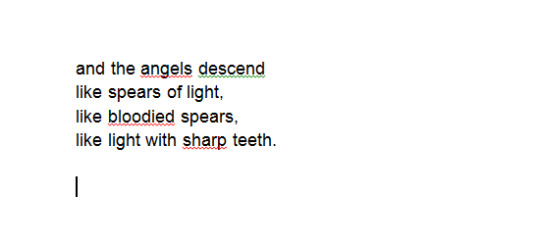



doomed by the narrative; a man who truly believes he’s above fate. that somehow, someway he’ll find a way to outclass, to outsmart, to outlive fates cruel plans for him- bestowed upon him the courage, the will, the resolve to do no wrong. yet still, still he manages. he’s wrong, he’s wrong, he’s wrong, he’s wrong! He’s guilty and will never be forgiven. Doomed to always repeat the past- to never learn from his shortcomings, to never find a way to make peace with himself and the world around him. he was born a blessed child and will die one of woe. a tragedy that repeats itself ad nauseum. forever and always.
Dazzled, Precise, Anna de Noailles / A Lot To Be Mad About, Kiki Nicole / Unknown / Plainwater: Essays and Poetry, Anne Carson / Star Wars Knights of the Old Republic II: The Sith Lords (2004) / Their Eyes Were Watching God, Zora Neale Hurston / Descend, Keaton St. James / 25th Year of Marriage, It Goes On, Alicia Ostriker / Star Wars Knights of the Old Republic II: The Sith Lords (2004) / Cut, Caitlyn Siehl / Ad Nauseum, N
#web weaving#trigun#millions knives#poetry#web weave#poetry compilation#okay this one is very specifically about knives but feel free to tag it as whatever blorbo u like#long post#mine#knives#THE LAST ONE IS MY OWN WRITING BE NICE#my writing#p/l/antcest/kv fans DNI#this is NOT for you
134 notes
·
View notes
Text
all about me 💛
hey!! my account's recently been gaining a lot of traction (tysm for all the likes n reblogs :D) so i thought i'd make a lil all about me post!!
✨💛👻💛✨
name: ezra
nicknames: ez/rain/rainy
bday: 10/28
pronouns: they/them
gender: nonbinary
sexuality: aceflux + lesbian
ethnicity: latinx and israeli
nationality: american💥🦅🤠
autism: yesss
hobbies/interests: learning languages (i'm a no sabo kid) writing short stories and poetry, reading, drawing and painting, playing piano, listening to and making music, hiking, activism, environmentalism, debating, tarot reading, baking dancing, cooking, and vibing with my friends and family
favorite music artists: mitski, daisy the great, boygenius, clairo, kali uchis, arctic monkeys, sir chloe, tally hall, lemon demon, the crane wives, phoebe bridgers, the last dinner party, penelope scott, sofía reyes, selena quintanilla, chappell roan, conan gray, lucy dacus, cavetown, faye webster, lady lamb, ricky montgomery, king princess, julien baker, vundabar
favorite foods + drinks: tamales, arepas con queso, mexican rice, tom kha, thai tea, cherry and peach flavored everything, and caramel coffee
other favorites: tumblr history, my headphones, sunsets, evergreen forests, the ocean, red pandas, ghosts, bees, fluffy cows, marigolds, musical theater, polaroid pictures, generation loss, drawfee, dropouttv, smosh, sleeping, rainbow airheads, audre lorde, sylvia plath, edgar allen poe, zora neale hurston, sandra cisneros, sappho, emily dickinson, robert frost, cool stickers, world/human history, art history, etymology, the colors yellow and red, astrophysics, and animal crossing
what you can expect from my blog: poorly written poetry, obsessing over my favorite music artists, tumblr history reblogs, posts on social justice/human rights, chaotic rambles about my latest hyperfixations, complaining about my chronic pain, and annoying all my moots 💖
⚠️ i am a minor!! i don't mind interacting with adults but don't be sketchy or you will be blocked!! ⚠️
dni if you are racist, sexist, homophobic, transphobic, ableist, xenophobic, zionist, or discriminatory towards any religions.
you can find almost all my posts/posts that i've reblogged and added to under the tag #morallyrainyrambles :)
IMPORTANT LINKS!!
enjoy your day/night 💛
11 notes
·
View notes
Text
MOGAI BHM- Day 11!
happy BHM! today i’m going to be talking about music and literature during the Harlem Renaissance!
Literature During the Harlem Renaissance-
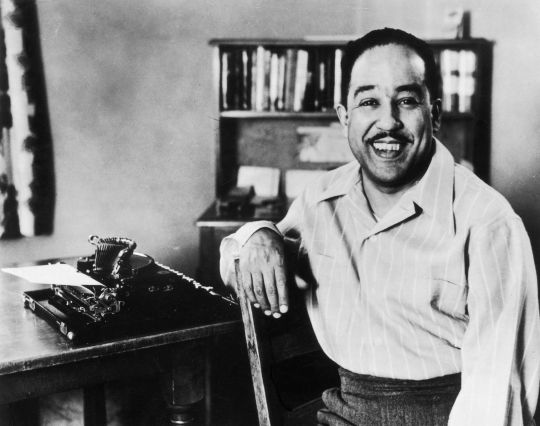
[Image ID: A black-and-white photograph of Langston Hughes, a Black man with short hair. In the photograph, he’s sitting with his arm resting on the back of a chair in front of a table and a bookshelf. He’s smiling widely and wearing a light-colored long-sleeved collared shirt with thin, vertical white stripes. End ID.]
One of the spheres most influenced and prominent during the Harlem Renaissance was that of Black literature. Black writers began to publish works about being Black in America, about Black pride and stories, about forging a racial and cultural identity, and as Black stories began to become more told on stages, they also began to be told more through literature.
Magazines were a huge part of literature during the Harlem Renaissance- they were opportunities for Black writers to collaborate and reach larger audiences. Some of the most influential magazines of the era include the NAACP-published The Crisis, and Marcus Garvey’s and the UNIA’s N*gro’s World. Publications such as these boldly discussed racial topics and allowed readers to connect with their own racial identities.
The most famous writer of the Harlem Renaissance, indeed one of the most famous and influential American writers ever, is Langston Hughes. Langston was many things- he was a poet, an essayist, a novelist, and an activist. He is most known for his poetry, but all his genres of writing revolved around racial identity. Hughes is known for saying that Black artists rejecting their racial identity stood in the way of them truly creating Black art.
Langston’s most famous works include The Weary Blues, a poetry collection about Black jazz and blues musicians and Black life in America, famous for incorporating blues and jazz into his writing as well as Black American dialects. He also collaborated with other famous artists like Aaron Douglas and Zora Neale Hurston on the magazine Fire!!, a bold magazine for Black artists focusing on race, sex, intersections, and more. Hughes wrote about and memorialized the Harlem Renaissance in his autobiography The Big Sea.
Zora Neale Hurston was another very famous writer during the Harlem Renaissance. She wasn’t afraid to write in an explicitly Black way- she wrote in Southern Black dialects, about Black pride and autonomy, and didn’t worry about appealing to a white audience, which earned her criticism for being “too black”- a label she wore with pride. She was also known for writing about colorism within Black communities. Zora wrote famous works like “Their Eyes Are Watching God” and “Barracoon”.
The Harlem Renaissance saw the growing popularity of many, many writers. Other famous Harlem Renaissance writers include Countee Cullen, whose poetry chronicled Black lives in America, Claude McKay, whose famous story ‘Home to Harlem’ detailed the life of a Black soldier, James Weldon Johnson, whose famous poem ‘Lift Every Voice And Sing’ has been set to music, and many, many others.
The Harlem Renaissance left a huge legacy on Black literature.
Music During the Harlem Renaissance-

[Image ID: A black-and-white photograph of Louis Armstrong, a Black man with short hair. In the photo, he’s wearing a white, button up, collared undershirt beneath a light-colored suit jacket and a black bowtie, and he’s playing a trumpet. End ID.]
If there’s one aspect of the Harlem Renaissance that has had the most lasting impact on the world, it is music. Two of the world’s most popular, well-known, and influential genres, jazz and blues, were developed by Black musicians around and during the Harlem Renaissance. Developed in New Orleans, jazz music became an international music phenomenon.
Jazz was fast-paced, exciting, and had a focus on musical improvisation, allowing musicians to come up with their own music on the spot. Blues, a post-war musical genre that focused on slowly, passionately expressing deep emotions and difficult truths, became a staple of music in the Harlem musical scene and the Black musical scene across the country.
One of the staples of the Harlem Renaissance was a vibrant night life- this included many night clubs where Black musicians played music- as time went on, these night clubs became extremely popular, attracting huge crowds every night. They were a beautiful celebration of Black music, culture, and unity, and clubs like this are what led to the rising popularity of many Black musicians during the Harlem Renaissance.
Some of the most famous musicians of the Harlem Renaissance were Louis Armstrong, Bessie Smith, Gladys Bentley, Duke Ellington, Cab Calloway, among many others! Louis Armstrong is famous for songs like ‘What A Wonderful World’, ‘Hey Dolly’, and ‘La Vie En Rose’. Songs like these are still famous today, as are songs by the likes of Bessie Smith and Duke Ellington.
Jazz and blues music were the beating heart of the Harlem Renaissance, and to this day they are some of the hugest genres in the world, cementing the influence of Black people on the world of music.
Summary-
Literature during the Harlem Renaissance heavily focused on Black identity, pride, experiences, and exploring Black life in America
Famous Harlem Renaissance writers include Langston Hughes, Zora Neale Hurston, County Cullen, and Claude McKay
Music during the Harlem Renaissance was largely jazz and blues, two Black music styles
Music performances at night clubs sustained the energy and popularity of the Harlem Renaissance
Famous musicians of the Harlem Renaissance include Duke Ellington, Louis Armstrong, Bessie Smith, Gladys Bentley, and Cab Calloway
tagging @intersexfairy @metalheadsforblacklivesmatter @neopronouns @justlgbtthings @genderkoolaid @spacelazarwolf
Sources-
https://macaulay.cuny.edu/seminars/henken08/articles/h/a/r/Harlem_Renaissance_and_Literature_fb80.html#:~:text=The%20Harlem%20Renaissance%20brought%20along,to%20signify%20their%20cultural%20identity.
https://www.biography.com/authors-writers/langston-hughes-harlem-renaissance
https://www.zoranealehurston.com/
https://www.masterclass.com/articles/harlem-renaissance-literature-guide
https://www.history.com/news/harlem-renaissance-writers
https://www.biography.com/musicians/louis-armstrong
https://www.biography.com/musicians/bessie-smith
https://www.history.com/topics/roaring-twenties/harlem-renaissance#louis-armstrong
64 notes
·
View notes
Text
How dare you use the word “n****r” to me. You know I don’t use such a nasty word. I’m a refined lady and such a word simply upsets my conglomeration. What do you think I was doing in Washington all that time if not getting cultured. I got my foot in society just as well as the rest. Treat me refined.
Zora Neale Hurston Letter to Langston Hughes (d. 20th January 1931)
2 notes
·
View notes
Text
RE: Is the actual Baron Samedi sometimes portrayed as bisexual in Haitian Vodou?
Unlike my previous posts, this one is about the actual deity, Baron Samedi.
Previously I had claimed that the actual Baron Samedi is portrayed as bisexual (and a vers) in some places in the world. Upon further investigation, this claim is dubious. I have learned the hard way that books and the web are often unreliable sources of information when it comes to Vodou / Voodoo.
On Wikipedia, there is a claim that Baron Samedi is portrayed as bisexual in Haitian Vodou:
Gede Nibo's parents are Baron Samedi and Maman Brigitte; Baron Samedi is the leader of the Gede and Barons and is depicted as bisexual dandy or occasionally cross-dressing, wearing a top-hat and frock coat along with a woman's skirt and shoes. Samedi has a tendency toward "lascivious movements" that cross gender boundaries and also imply a lust for anal sex.[14]
The source for this claim is from a book written by Randy P. Conner, titled Queering Creole Spiritual Traditions.
There is an image posted on this Wikipedia article, captioned “Depiction of Baron Samedi, a bisexual lwa.” This image is dated from year 2006, taken from the Island of Salvation Botanica in New Orleans. This botanica is owned by Sallie Ann Glassman, “one of few white Americans to have been ordained [into Vodou] via the traditional Haitian initiation.”
I am not entirely certain of this, but it seems likely that both Conner and Glassman have confused Baron Samedi with one of the Gede.
Baron Samedi is probably the single most iconic lwa associated with New Orleans Voodoo. This is ironic, as I have been unable to find evidence that he was actually worshiped in New Orleans prior to the revitalization movement. The revitalization movement of the late 20th century draws heavily from Haitian Vodou. It has been criticized by Haitians for bastardizing their traditions and deities. One of the most common errors is the conflation of Baron Samedi with a different category of deities, called the Gede.
As far as I can tell, there are three sources which claim that Baron Samedi is portrayed as bisexual and/or gender-blending. These sources are Randy P. Conner, Katherine Dunham, and Zora Neale Hurston.
Randy P. Conner is a gay, Caucasian American academic, described as “an initiate and practitioner of both Haitian Vodou and Reglade Ocho (Santeria), studying primarily with Mama Lola, a well-known practitioner of these African Diasporic traditions.”
The following is a quote from Conner’s Queering Creole Spiritual Traditions (2014):
Sanmdi is a bisexual and occasionally androgynous dandy, leader of both the Bawons and the Gedes and the spirits of the dead. Married to Maman Brijit, he is the father of Gede Nibo…The Bawon is well known for his lascivious movements, which include both phallic thrusts and pelvic grinds, the latter (and perhaps also the former) indicating a desire to engage in anal intercourse.
A similar quote can be found in Conner’s Cassell’s Encyclopedia of Queer Myth, Symbol, and Spirit (1997):
Baron Samedi (also Baron Cimitiére, Baron La Croix) in Haitian- and New Orleans-based Vodou, a bisexual and occasionally transgendered dandy, leader of the Barons and the GHEDES, the spirits of the dead. He is married to Maman (or Madame) Brigitte (also known as Gran-N. Brigit)...The Baron is well known for his “lascivious movements,” which include both phallic thrusts and pelvic grinds, the latter (and perhaps also the former) indicating a desire to engage in anal intercourse.
Katherine Dunham was a famous African American dancer and social activist, known for studying dance forms within Haitian Vodou. The following is a quote from Dunham’s Dances of Haiti (1983) (which Conner himself quotes in Queering Creole Spiritual Traditions and Cassell’s Encyclopedia)
One of the common and fearsome possessions is by Papa Gede, whose special emissary is Baron Samedi. Baron Samedi fancies himself quite a dandy, is a heavy drinker, and expresses himself in foul language and lascivious movements. He wears a top hat, a black tail coat, a skirt of cloth or grass, and at times dark glasses. If dark glasses are not available, he may simply wear battered rims without lenses. Baron Samedi's dual sexuality is expressed in gesture and language as well as clothing.
Zora Neale Hurston was an African American anthropologist who conducted research in Haiti and Jamaica between years 1936 and 1937. Due to the proximity to Alastor’s lifetime, I admit to relying heavily on her research. In Hurston’s Tell My Horse (1938), Baron Samedi is described as forcing humans to dress and behave in a “transgendered” manner:
Baron Samedi delights in dressing his “horses” in shabby and fantastic clothes like Papa Guedé. Women dressed like men and men like women. Often the men, in addition to wearing female clothes, thrust a calabash up under their skirts to simulate pregnancy. Women put on men’s coats and prance about with a stick between their legs to imitate the male sex organs.
All three of these sources are Americans, who studied Haitian Vodou from an outsider perspective.
In America - and other places outside of Haiti - misinformation is frequently spread about Haitian Vodou. There are some really egregious inaccuracies floating around, such as claims that the actual Baron Samedi is asexual or trans man - obviously wrong! A lot of people confuse Baron Samedi with Papa Gede - or even Gede Nibo! Gede Nibo is so different from Baron Samedi, but sometimes people confuse him with Baron Samedi because he also wears a top hat. A similar thing happens with Papa Legba and Elegua, where the two get mixed up due their shared origin and the similar spelling of their names. The burlesque, aggressively sexual traits typically attributed to Baron Samedi are actually features of Papa Gede, and other members of the Gede. The Baron Samedi of Haitian Vodou seems to have a totally different demeanor, where he is a powerful and serious presence.
Granted, it is possible that Baron Samedi has evolved over time, where the Barons (Bawons) have diverged from the Gede. Afterall, Hurston conducted her research in the 1930s. But judging by the descriptions, American sources may have misattributed queer sexuality and/or gender-blending to Baron Samedi, when it is actually the Gede who are associated with marginalized sexualities and genders.
If Conner, Dunham, and Hurston are in fact misinformed, I apologize for spreading this misinformation. My knowledge of Vodou / Voodoo is so rudimentary, it’s not even funny…
I have done a piss poor job of vetting my sources, and need to take responsibility! Due to being predominantly white, LGBTQ communities often have a problem with misrepresenting minority cultures.
Moving forward, I will try to be more careful in my research, so not to misrepresent Vodou / Voodoo as it is practiced across the world.
FULL CITATIONS FOR SOURCES MENTIONED
Conner, Randy P. Lundschien, and David Sparks. Queering Creole spiritual traditions: Lesbian, gay, bisexual, and transgender participation in African-inspired traditions in the Americas. Routledge, 2014, p. 64. ISBN: 1560233516, 978-1560233510
Conner, Randy P., et al. Cassell's encyclopedia of queer myth, symbol and spirit: gay, lesbian, bisexual, and transgender lore. Cassell, 1997, p. 83. ISBN: 0304704237, 978-0304704231 https://transreads.org/wp-content/uploads/2021/08/2021-08-04_610b1d2370242_Cassellsencyclopediaofqueermyth.pdf
Dunham, K. (1983). Dances of Haiti. [Los Angeles, CA] : Center for Afro-American Studies, University of California, Los Angeles, pp. 19-20. ISBN: 0934934118, 978-0934934114 https://archive.org/details/dancesofhaiti0000dunh/page/18/mode/2up
Hurston, Zora Neale. Tell My Horse. Philadelphia ; New York [etc.], J. B. Lippincott company, 1938. ISBN: 0061695130, 978-0061695131. https://www.zoranealehurston.com/books/tell-my-horse/ https://bookreadfree.com/24210/646322
#commentary#the loa (hazbin hotel)#baron samedi (hazbin hotel)#TLDR there is a good chance i was wrong about claiming baron samedi is bisexual. if so i apologize for spreading misinformation!
4 notes
·
View notes
Text


o Journaling and Reading o
Been slacking on both but every day is a new day! B&N had a buy one get one 50% off sale on certain books so I took advantage of that and picked up some February reads. Almost halfway through the month but I believe I can make it through at least two more books. Currently reading Their Eyes Were Watching God by Zora Neale Hurston and am enjoying it. Black literature is at the forefront of my reading journey; these books undeniably make me feel something that other fiction books can’t.
Journaling used to be my thing! I have so many emotions and am missing the know how to express them effectively, that’s where my journal(s) come in. I have at least two in circulation at all times but this is my favorite one. Bottling up your feelings is never a good look and writing them out has proven beneficial 💗. Need to be more consistent though..
4 notes
·
View notes
Text
lfg… lighting out for the territories
Reinhard had always hated parties, and this one was no exception. He didn’t mind the stiff white dress uniform he was wearing, nor did he mind the food, or the music. It was simply the concept of being at a party, when he would rather be doing something productive.
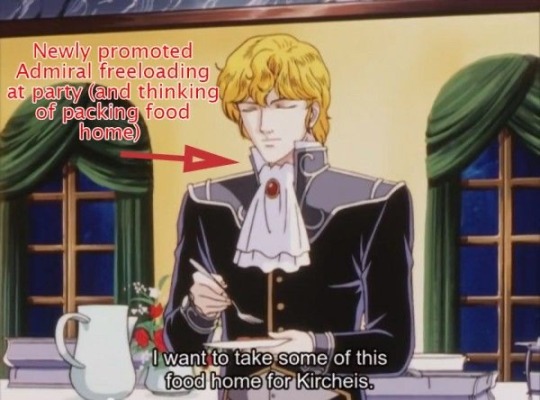
“So, you’re the celebrity,” Dominique said. Her voice was low for a woman’s, and somewhat sultry.
OMG DOMINIQUE!!! MY MF GIRLFRIEND!!!
i love econ bro rein wiaw reinhard and stringer bell would get along well (or hate eachother) (bc we all know reinhard is a utilitarian goody-two-shoes despite being a conqueror. no love for the fiends & the pushers, von musel!)
the fact that this description is in the first chapter.. very ambitious.. even so early u see reinhard’s cruel outlook “…while the saving of four hundred Alliance soldiers may mean much to their families, in a war where battles regularly involve the lives and deaths of millions of people, it’s insignificant.” u can juxtapose this to yang’s moral dilemma bc reinhard has none. in fact hes like a lot of ppl will die for a greater cause (while that aspect of war torments yang, it is something a younger reinhard can alr rationalize??? rein canon compliant REDACTED?) wiaw reinhard is so fascinating to me bc hes in a far more disadvantageous position than he ever was at any point of canon tl. not to be oh ur sister aint in the kaiser’s ears skirt admiral~~ but its kinda like that. reinhard my baby im so sorry plz dont kill m-
BISHOP DEGSBY…???!!! also rly love the mention of the mandate … the goldenbaums r like this bizarro mix of prussian aesthetic, franco revanchism& legit hitlerite shit especially back in rudolf’s heyday n the intersection of emperor-god more associated in certain eastern cultures than not like theyre sooo weird the empire is so weird.
Reinhard’s smile was cold. “The Alliance is my home, and I am grateful to it for all that it has given me, but I do not pretend that the reason I fled there as a child was out of some ideological purity. It was out of a simple desire to keep the ones I love safe. To say anything to the contrary would be the height of hypocrisy.”
“And yet you claim to hate the Goldenbaums?”
“Hatred is not ideology, Bishop. It’s personal.”
reinhard von musel playa hater of year u.c. 796 😂
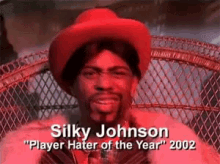
im sorry to put on my evil fujo goggles but i think something clicked here so canon lotgh reinhard had kircheis but distance from his family while in wiaw he has his family but distance from kircheis… ofc his hatred of the goldenbaum come from the same core of them tryna sexually barter his sister but its so fascinating here.
omg is reinhard being an econ bro slash amateur space socmed influencer the equivament of yang’s second rate historian bro-ism in canon tl . except reinhard loves this space military shit & the econ is an accidental hustle. that is the funniest shit ever + is actually more adjacent to my relationship w history… and even this whole blog. health bro shoehorned into amateur historian/anthropologist on yaoi tumblr
INGRIDDDD OMG I FUCKING CALLED IT..!!!
YOOOOOOO THIS SHIT CRAZY CULT COERCION MEETS HUMAN TRAFFICKING?? INGRID BEING THE SAME AGE AS ANNEROSE WHEN SHE MET LUDDY? I did not think she was that young at the wedding what is going awnnn hunny.
blackwell is like struggling to parse if reinhard is a fuckboy while reinhard is like im something of a feminist myself, (he really is my baby god its 2019 again the peak of my reinhard cte)
IS CH2 TITLE A ZORA NEALE HURSTON REF? This is the third wiaw chapter title ref i clocked methinks.
another moment id 100% comm is reinhard in jeans & a light 80s style jacket. reinhard always forgets hes in the top .5% percentile of beauty its hilaryus. pretty girl who just wants to be one of the bros
oh wow we’re actually getting ‘earth church being given cogent beliefs outside of being the space illuminati/blood libelesque as they were in canon’ wow thank u so much for fixing up that disasterclass. authornim’s catholic upbringing is bleeding thru but it makes it more poetic! but catholics dont be dope fiends like this. haha love it
MULLER!!!!! Lmao im already so into this game of telephone theyre playing.
It had been a waste of a day, and Reinhard had returned to his apartment in a bad mood. His mood only got worse when he found that his entire apartment had been ransacked while he was out. His personal computer was missing, and it was clear that the thief had left in a hurry, which meant that they had known Reinhard was returning home, which meant that it was not a thief but probably an imperial agent.
Reinhard stood with his hands on his hips in the middle of his studio, and addressed the room in the imperial language, using his general haughty tone, even though he had just had his apartment broken into, and he was somewhat disheveled from his day of training.
“Lieutenant Commander Muller,” he said. “I’m sure that you know by now that I do not keep anything other than my personal correspondence on my personal computer, and that my personal correspondence is of absolutely zero interest to you. Furthermore, you will notice that, although we share similar responsibilities, I have not, and do not intend to, break into your personal quarters. We may be enemies, but Phezzan would have you believe that we are living for the moment on a civilized planet, and I would hope that we can behave like civilized men.
“In the interest of not causing too great of a disturbance to the detente which exists here on Phezzan, I will not elevate this issue if you would return my property to me. I will be at the park at 54th and Lexard tomorrow evening. I will see you there, Lieutenant Commander Muller.”
IM ACTUALLY CACKLING!!!!!! hes so catty i love her. muller trying to look like a student but failing😂
“Well, I mean, he’s not… He’s not from the Empire.”
“Oh?”
“Like he would have been killed under Rudolph. Or at least sent to do labor.”
adding w/e starzone the galactic empire is in as ‘places to avoid entirely if ur any visible person of color’ MY God the absence of metaphor is striking amc iwtv voice . love how reinhard is like oh if u think u got my tea off a blog name then u rly gone get sum. tell leigh send hugs & kisses to my first love xoxo reinhard von musel
“Sir, my sister is more competent than I am,” Reinhard said, which made Blackwell laugh.
And is!!!
“Tell me.” She was a little more direct without the bishop present, which Reinhard thought was both interesting and an improvement.
LIKE WHAT IS GOING ON WITH HER!??? also im Lmbo @ reinhard going ‘well do i look like yo mf mama (earth) ‘ hes such a smartass i adore him. ik authornim oppresses reinhard but they truly Get Him!!!!
“Don’t make promises you can’t keep,” Ingrid said. She looked up at the candle-lit altar. “You may look like a god, but you are only a man.”
Reinhard shook his head, too used to strange remarks about his appearance to be embarrassed. “I’ve never seen a god move anything in the world, so I would much prefer to be a man. Besides, my sister looks better than I do.”
im obsessed w ingrid bodying reinhard in such a manner with religious undertones & reinhard going fuck god. my sister’s cuter than me.
Ingrid’s hand dropped back to clutch the pew. “Part of me lived. Part of me died. A very dear… friend… of mine sacrificed her standing to save me. The Earth Church protected me. I’m very grateful to their patronage.”
DOES SHE FEEL LIKE A DEAD MAN WALKING…. IS THE EARTH CHURCH TAKING ADVANTAGE OF THE LOSS OF WHAT WAS HOME FOR HER. MAGGIE😢😢😢HER SON ERWIN💔💔
REINHARD LOCKET…😢👀
As far as the man you encountered at a party, yes, I do believe I know who you’re referring to. I… hope... that you do not have too many reasons to come into contact with him, but if you should see him again, you may let him know that his message was received very happily, and that, quote, “I’m doing what you said to.”
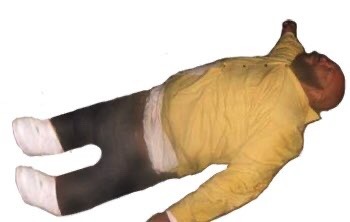
OHMYGOD💔💔💔💔 wait im kinda jtfo at yang pov in this message cuz he prolly thinking to himself aw shit someone could be figuring me out on phezzan meanwhile reinhard & muller is in a quasi one sided homosexual espionage rigmarole
OMG ANNEROSE IS BACK!!!!
Linz had rather kindly made her a sign that read, “If your question is about my personal life, the answer is ‘NO.’ If you have an actual question, please come in.”
⚰️⚰️⚰️
9 notes
·
View notes
Text
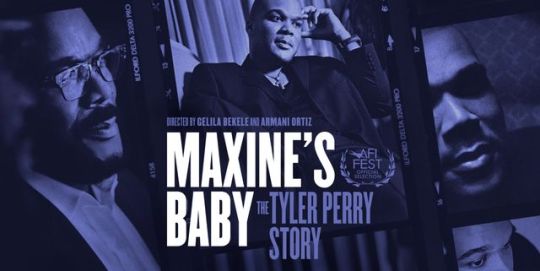
Maxine’s Baby: The Tyler Perry Story
Perry’s legacy in film, in Black American culture is imprinted. Generationally. What he’s done in the industry is groundbreaking. His non-traditional approach and method to all he’s accomplished is a testament to what we’ve always done as Black Americans when it comes to everything — having a seat at our own table we built. He broke the mold and shattered the glass ceiling. He truly has the Black American, ancestral lineage of perseverance running through his blood!
I also learned so much more about him and his relationship with his mother and his mother in general that I hadn’t known. Also, parts of him speaking about his mother connected a lot of why he has certain perspectives on life and relationships. The Black women in his life (his mother and aunt who is hero-like in my opinion for the type of action of love) truly played the biggest roles in his shaping as a young boy to becoming a man. We got an inside view of his mind and the journey of him becoming who he is.
Seeing the enormity of his success just is positively moving and stirring. I found myself super proud with the scenes of the grand opening of his ultimate studio! Those parts of the docu had me feeling like I could conquer anything. All of the studio grand opening touched my heart and made me smile tears of joy in the simple fact that he is the embodiment of our ancestors’ love, hope and courage. He built on what they started and I can feel them saying, “Well done.”
It’s moving and emotionally charging.
He also allowed us into the parts of his life as a father to his son. You can tell all that he does and is doing is to be able to give out the love he wished he could’ve gotten from the father-figure now, in life. His relationship with his son is so beautiful.
The intimate portrait, bio styled documentary was a great watch. I definitely recommend.
Now….I must speak on the issues that I took with aspects of his footprint on the landscape of film.
Perry loses me when he says things like, “…what we’ve done to each other as Black people who are successful…”. He referenced the boycotting Amos ‘N’ Andy had received in its time along with Alice Walker’s The Color Purple. Amos ‘N’ Andy’s controversy: this show (was a TV adaptation of the radio sitcom of two white men who “adopted stereotypical dialect, intonations, and character traits that had been established in the blackface minstrel tradition in the 1800s”) came out in the midst of the Jim Crow era. An era we all know served to present imagery of Black Americans in racist propaganda replete with racist stereotypes and tropes. And the actors weren’t white men in blackface but actual Black men in these roles. Which is also the similar criticisms Perry’s Madea character receives.
The two shouldn’t be paralleled. Amos ‘N’ Andy was clearly stereotypical mockery (and no condemning the actors at the time) while Walker’s book is “inspired, in part, by a story that Walker's sister told her, about a love triangle involving their grandfather.” It is an account of real life experiences—a real depiction of what Black people, specifically Black women, were going through in the early 1900s in the Deep South. On the heels of freedom (this is post American slavery with the signing of the Emancipation Proclamation) yet still facing the aftershocks of “ending” slavery (racism has never ended), Black women still faced slave-like treatment from former plantation & slave owners and now sexism & patriarchal treatment from their partners (I say now not in a sense of this being completely new). All while gaining more freedom in their outspokenness for the domestic plights they faced with their significant others and demanding equal rights.
Walker’s book and the following film adaptation received backlash on account of the increasing fracture between Black women and Black men in a post “free” society.
Perry also mentioned the not so pleasant views Langston Hughes had with Zora Neale Hurston and her usage of the Black Southern dialect in her writings. That too is incomparable because again, she conveyed real life. These were not caricatures she fictionalized for comic relief.
(please leave Alice Walker and Zora Neale Hurston’s works alone in correlation to yours)
Or in an appearance from Killer Mike (in Perry’s documentary) alluding to the fact that other groups of people don’t take issue with the negative depictions of their people in film.
One — yes they have and do. Has he spoken to any other ethnic group to ask?
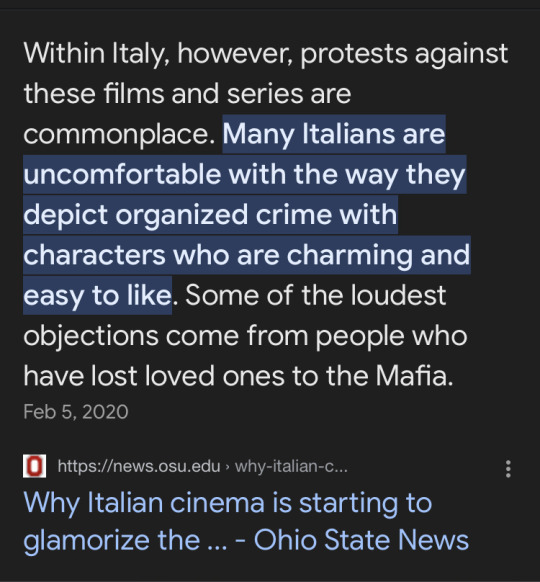
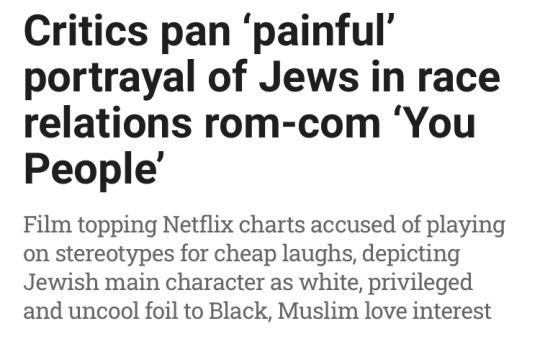
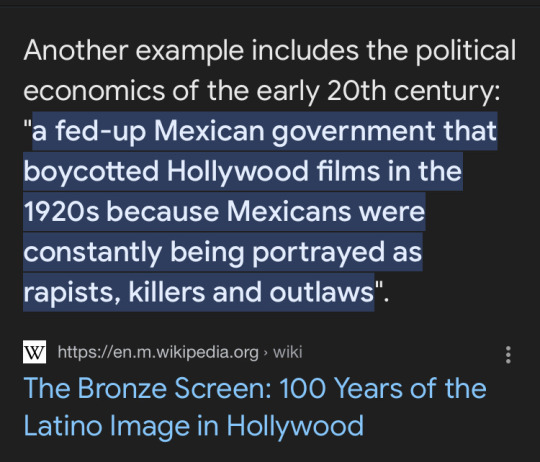
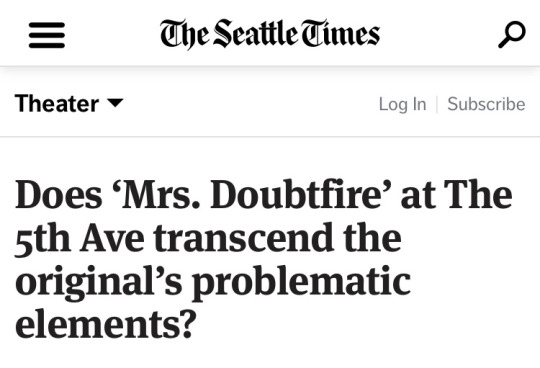

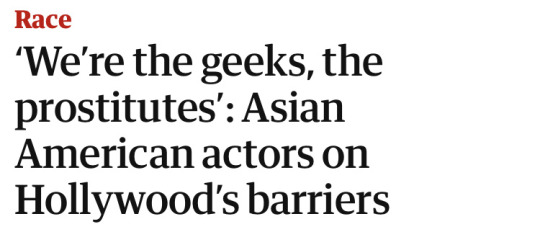
Two — yes, your core demographic, who is Black, will have the most dialogue regarding your work. Who else would? White people? No, because you don’t make art for them. Your work is rooted through the lens of Black Americans. Of course the biggest critique will come from us.
We have a very different relationship with our own country and the world at large. Centuries of ridicule in minstrel shows with not Black (because yes, it wasn’t only white people performing in blackface to mock us) people donning blackface or in film with dangerous propaganda that single-handedly created a racist, terrorist group (k k k). We are still dealing with the aftermath of these harmful depictions and are in constant corrective mode. It’s a continual action.
He spoke about intention as well. And while I don’t believe Perry’s intention of the Madea character (or any of his characters in his films, shows or plays—that’s a different conversation…among other talking points surrounding him can be discussed in an entirely separate talk) was to be problematic it is very damaging to the representation of Black American women — two things can exist. Especially considering all the negative portrayals and images of us over the many, many, many years in all forms of media that the character fits into (again no condemnation on any of the actresses at the time).
But with everything I’ve said, Madea will just always have a kindred connection with me.
I was first introduced to Tyler Perry years ago from a cousin who lent me a VHS of both “Madea’s Family Reunion: The Play” and “Diary of a Mad Black Woman: The Play”. And when Madea came across my screen in that loud shiny red funeral squirt suit, there was an instant likability! I laughed more than I had from anything scripted — in fact, his plays were the first time I had ever watched a stage play. And from then, I have always had a special place in my heart for his plays and for Madea! I purchased 6 DVDs of his plays afterwards and the “Diary” film while I was in my freshman year in college and those plays got me through my first year.
I am glad he’s since retired the character and opened a new chapter of the work he’s putting out but I can acknowledge that Madea and the work pre-Madea’s retirement has been and is a source of joy for me.
And I think that’s what Tyler wants to do with all that he does.
Bring us joy.
#Maxine’s Baby: The Tyler Perry Story#Tyler Perry#cinema#Black America#film talk#Black American cinema#film industry#Southern culture#Black tumblr#Black American culture#might be typos
5 notes
·
View notes
Text
Title: Their Eyes Were Watching God Author: Zora Neale Hurston Publication Year: 2009 (1937 original) Publisher: Amistad Genre: fiction, classics
Hurston was well ahead of her time, creating a protagonist like Janie. It’s not to say that headstrong female characters didn’t exist in the past, but I could imagine some readers at the time might have been scandalized due to Janie’s fierce independence and the time she spent with three different men, which was so unabashed, I loved it.
It was a bit difficult to get into the writing style at first, but after a few chapters, the novel became an even richer text that beautifully shared the Black South’s language and culture. In addition, there was a lot to think about in this novel, ranging from race (and, relatedly, colorism) to gender/sexuality to the legacy of slavery. All of these were inevitably tangled up with one another, which added so much detail to an already rich story.
It took way longer than it should have for me to have picked this one up, and while I didn’t completely enjoy the story in general, Hurston gave so much to the reader to contemplate. This is absolutely a book that’s worth reading closely, and I can see why it’s assigned to students so regularly in the United States.
Content Warning: domestic abuse, racial slurs (n word), racism, death, sexism, misogyny, colorism mentions, slavery mentions, rape mentions
4 notes
·
View notes
Text
So, I hear y'all that we're losing nuance. I hear that we're making it harder, not easier, to talk about bad shit when we forbid representing it. I hear y'all that books shouldn't have to hit you over the head with a moral.
And. There's this memoir by a Black man about reading Huckleberry Finn in grad school and being the only Black student in the class. I haven't read it, just heard about it, but from what I know of it, I think it makes a non-puritanical argument for not assigning works with the N word as mandatory reading, and I find that compelling, particularly when considering that sometimes a class has exactly one Black student. Like, that is a recipe for some really toxic loneliness/being made a spokesperson of your race/encountering lots of ignorance and prejudice from your classmates and instructor/etc.
I think "How do we most effectively teach about racism and other forms of prejudice?" is a question that people of goodwill can have different answers to. I also think that one possible answer is "read works by people of color themselves rather than allocating your limited instruction time to a work by a white man." And I don't think it's particularly puritanical of me to say that Frederick Douglass, Zora Neale Hurston, and James Baldwin (just to name a few) have more complex and worthwhile things to say about racism than Mark Twain.
Anyway, if you want to pick up the memoir, it's currently 75% off, and you can find it here:
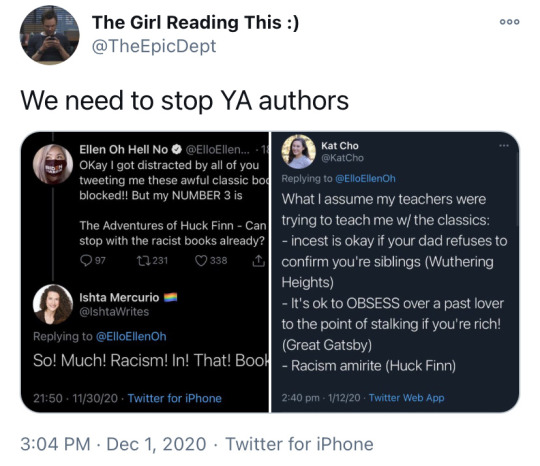
229K notes
·
View notes
Text
eacting to the White Publishing World: Zora Neale Hurston and Negro Stereotypes
Claudine Raynaud
Chapter
118 Accesses
1 Citations
Abstract
Hurston’s article in The Negro Digest ‘What White Publishers Won’t Print’1 (April 1950) bemoans the dearth of novels that depict Negro and other ethnic minority characters with emotions and rest content with the stereotypes of the ‘exceptional’ Negro and the ‘quaint’. Taken on its own account, it is a vindication of minority rights and argues for a true reflection of what American society was like in the 1950s. It is an appeal to fight racist ideology precisely by undoing racist and sex- ist stereotypes, such as the idea that the black American cannot love, but can only exhibit ‘the passion of sex’ (Hurston 1995, p. 953).2 In this text, Hurston does not limit herself to the depiction of black life. She is indignant about the way in which Jews, as well as other ethnic minorities, such as the Chinese, are maligned by authors supported by contemporary publishers. These texts, she argues, serve to glorify the image that the white Anglo-Saxon intellectual elite have of themselves, and promote. She advocates novels in the vein of the naturalist school embodied at the time by Nobel Prize novelist Sinclair Lewis and his best-selling Main Street (1920).3 When Hurston wrote that essay, her publishing years were over, the productive decade of the 1930s a thing of the past. She was aiming at placing her new work with white publish- ers who were working with the major modernist authors of the day. Her anti-communism was just as fierce as her desire to be true to the variety and the breadth of Negro experience.
Keywords
African American Culture
Racist Ideology
Black Life
Negro Life
Black Writer
These keywords were added by machine and not by the authors. This process is experimental and the keywords may be updated as the learning algorithm improves.
This is a preview of subscription content, log in via an institution.
Preview
Select bibliography
Boyd, Valerie (2003) A Life Wrapped in Rainbows: The Life of Zora Neale Hurston. London: Virago Press.
Google Scholar
Brown, Sterling A. (1930) ‘Our Literary Audience’. In Henry Louis Gates, Jr. and Gene Andrew Janett (eds.), The New Negro: Readings on Race, Representation, and African American Culture, 1892–1938. Princeton, NJ: Princeton University Press, 2007, pp. 384–90.
Google Scholar
Caiby, Hazel (1991) Foreword to Seraph on theSuwanee. New York: HarperPerennial, pp. vii–xvi.
Google Scholar
Charles, John C. (2009) ‘Talk about the South: Unspeakable Things Unspoken in Zora Neale Hurston’s Seraph on the Suwanee’. Mississippi Quarterly (Winter/Spring). <http://findarticles.eom/p/articles/mi_hb3524/is_l-2_62/ai_n53293396/> (accessed May 15, 2012).
Google Scholar
Du Bois, W. E. B. (1926) ‘Review of Nigger Heaven’. Crisis, 33: 81–2.
Google Scholar
Harrison, Hubert A. (1922) ‘On a Certain Condescension in White Publishers’. In Henry Louis Gates, Jr. and Gene Andrew Jarrett (eds.), The New Negro: Readings on Race, Representation, and African American Culture, 1892–1938. Princeton, NJ: Princeton University Press, 2007, pp. 373–4.
Google Scholar
Hedden, Worth Tuttle (1948) ‘Turpentine and Moonshine: Love Conquers Caste Between Florida Crackers and Aristocrats’. The New York Herald Tribune Weekly Book Review. October 10, p. 2.
Google Scholar
Hedden, Worth Tuttle (1949) The Other Room. New York: Paperback Rack Books, 2002.
Google Scholar
Hemenway, Robert (1977) Zora Neale Hurston: A Literary Biography. Urbana: University of Illinois Press.
Google Scholar
Hurston, Zora N. (1937) Their Eyes were Watching God. Urbana-Champaign: University of Illinois Press, 1978.
Google Scholar
Hurston, Zora N. (1939) Moses, Man in the Mountain. In Zora Neale Hurston: Novels and Stories. New York: Library of America, 1995, pp. 337–593.
Google Scholar
Hurston, Zora N. (1942) Dust Tracks on a Road. An Autobiography. Urbana-Champaign: University of Illinois Press, 1984.
Google Scholar
Hurston, Zora N. (1948) Seraph on the Suwanee. New York: HarperPerennial, 1991.
Google Scholar
Hutchinson, George (1995) The Harlem Renaissance in Black and White. Cambridge, MA: Harvard University Press.
Google Scholar
Jackson, Lawrence (2007) ‘Bucklin Moon and Thomas Stanton in the 1940s: Crusaders for the Racial Left’. Southern Literary Journal, 40(1): 76–97.
Article
Google Scholar
Jackson, Lawrence (2011) The Indignant Generation: A Narrative History of African American Writers and Critics 1934–1960. Princeton, NJ: Princeton University Press.
Google Scholar
Johnson, James Weldon (1928) “The Dilemma of the Negro Author”. In Henry Louis Gates, Jr. and Gene Andrew Jarrett (eds.), The New Negro: Readings on Race, Representation, and African American Culture, 1892–1938. Princeton, NJ: Princeton University Press, 2007, pp. 378–82.
Google Scholar
Kaplan, Carla (ed.) (2002) Zora Neale Hurston: A Life in Letters. New York: Doubleday.
Google Scholar
Lewis, David Levering (1981) When Harlem Was in Vogue. New York: Knopf.
Google Scholar
Lewis, Ngahna Tamu (2004) ‘The Rhetoric of Mobility, the Politics of Consciousness: Julia Mood Peterkin and the Case of a White Black Writer’. African American Review, 38(4) (Winter): 589–608.
Article
Google Scholar
Lewis, Sinclair (1920) Main Street. New York: New American Library Signet Classic, 1964.
Google Scholar
Lewis, Sinclair (1930) ‘The American Fear of Literature’, October 17. <http:// www.nobelprize.org/nobel_prizes/literature/laureates/1930/lewis-lecture. html> (accessed May 20, 2012).
McKay, Claude (1927) Home to Harlem. Kenmore, NY: Northeastern University Press, 1987.
Google Scholar
McKay, Claude (1937) A Long Way from Home. New York: Mariner Books, 1970.
Google Scholar
Moon, Bucklin (1943) The Darker Brother. New York: Doubleday.
Google Scholar
Peterkin, Julia Mood (1924) Green Thursday. Athens, GA: University of Georgia Press, 1998.
Google Scholar
Peterkin, Julia Mood (1927) Black April. Athens, GA: University of Georgia Press, 1998.
Google Scholar
Peterkin, Julia Mood (1928) Bright Skin. Athens, GA: University of Georgia Press, 1998.
Google Scholar
Peterkin, Julia Mood (1929) Scarlet Sister Mary. Philadelphia: The Blakiston Company.
Google Scholar
Peterkin, Julia Mood (1933) Roll, Jordan, Roll, with photographic sketches of the Gullah by Doris Ulmann. Indianapolis, IN: Bobbs-Merrill.
Google Scholar
Peterkin, Julia Mood (1934) A Plantation Christmas. Whittier, NC: Cherokee Pub, 1978.
Google Scholar
Pfeiffer, Kathleen (2000) ‘Introduction’ to Carl Van Vechten, Nigger Heaven. Urbana and Chicago, IL: University of Illinois Press, pp. ix–xxxix.
Google Scholar
Rawlings, Marjorie Kinnan (1955) The Secret River. New York: Scribner’s.
Google Scholar
Raynaud, Claudine (1988) ‘Autobiography as a “Lying” Session: Zora Neale Hurston’s Dust Tracks on a Road’. In Joe Weixlmann and Houston A. Baker (eds.), Studies in Black American Literature: Black Feminist Criticism and Critical Theory, vol. III. Greenwood: Penkevill Publishing Company, pp. 110–38.
Google Scholar
Raynaud, Claudine (1992) ‘“Rubbing a Paragraph with a Soft Cloth?”: Muted Voices and Editorial Constraints in Zora Neale Hurston’s Dust Tracks on a Road’. In Julia Watson and Sidonie Smith (eds.), De/Colonizing Subject: Politics and Gender in Women’s Autobiography. Minneapolis: University of Minnesota Press, pp. 34–64.
Google Scholar
Raynaud, Claudine (2013) ‘Modernism, Anthropology, Africanism and the Self: Hurston and Herskovits on/in Haiti’. In Kate Marsh and Fionnghuala Sweeney (eds.), Afromodernisms: Paris, Haiti and the Avant-Garde. Edinburgh and New York: Edinburgh University Press, pp. 103–25.
Chapter
Google Scholar
Robeson, Elizabeth (1995) ‘The Ambiguity of Julia Peterkin’. Journal of Southern History, 61(4) (Nov.): 761–86.
Article
Google Scholar
Schuyler, George S. (1929) ‘Negro Authors Must Eat’. In Henry Louis Gates, Jr. and Gene Andrew Jarrett (eds.), The New Negro: Readings on Race, Representation, and African American Culture, 1892–1938. Princeton, NJ: Princeton University Press, 2007, pp. 376–8.
Google Scholar
Scribner, Charles, Jr. (1990) In the Company of Writers: A Life in Publishing. New York: Scribner and Sons.
Google Scholar
Trombold, John (1999) “The Minstrel Show Goes to the Great War: Zora Neale Hurston’s Mass Cultural Other”. MELUS, 24(1) (Spring): 85–107.
Article
Google Scholar
Van Vechten, Carl (1926) Nigger Heaven. Urbana and Chicago: University of Illinois Press, 2000.
Google Scholar
Walker, Alice (ed.) (1979) I love myself when I am laughing… and then again when I look mean and impressive. New York: Feminist Press.
Google Scholar
West, James L. W. III (2010) “The Expansion of the National Book Trade System”. In Carl F. Kaestle and Janice Radway (eds.), The History of the Book in America 1880–1940. Vol. 4: Print in Motion: The Expansion of Publishing and Reading in the United States, 1880–1940. Chapel Hill: University of North Carolina Press, pp. 78–89.
Google Scholar
Wilson, Sondra Kathryn (ed.) (1999) The Crisis Reader: Stories, Poetry and Essays from the NAACP’s Crisis Magazine. New York: Random House.
Google Scholar
Wright, Richard (1940) Native Son. New York: HarperPerennial, 1998.
Google Scholar
Wright, Richard (1937) ‘Between Laughter and Tears’. New Masses, October 5: 22–3. <http://people.virginia.edu/~sfr/enam358/wrightrev.html> (accessed May 19, 2012).
Google Scholar
Wright, Ruth C. (1930) ‘Negro’s Authors’ Week: An Experiment’. In Sondra Kathryn Wilson (ed.), The Crisis Reader: Stories, Poetry and Essays from the NAACP’s Crisis Magazine. New York: Random House, 1999, pp. 341–4.
Google Scholar
Download references
Author information
Authors and Affiliations
Université Paul-Valéry Montpellier 3, France
Claudine Raynaud (Professor of English and American Studies)
Editor information
Editors and Affiliations
Aix-Marseille Université, France
Cécile Cottenet (Associate Professor) (Associate Professor)
Copyright information
© 2014 Claudine Raynaud
About this chapter
Cite this chapter
Raynaud, C. (2014). Reacting to the White Publishing World: Zora Neale Hurston and Negro Stereotypes. In: Cottenet, C. (eds) Race, Ethnicity and Publishing in America. Palgrave Macmillan, London. https://doi.org/10.1057/9781137390523_6
Download citation
.RIS.ENW.BIB
DOI
https://doi.org/10.1057/9781137390523_6
Publisher Name
Palgrave Macmillan, London
Print ISBN
978-1-349-48265-8
Online ISBN
978-1-137-39052-3
eBook Packages
Palgrave Literature Collection
Literature, Cultural and Media Studies (R0)
Publish with us
Policies and ethics
Access via your institution
Chapter
USD 29.95
Price excludes VAT (USA)
Available as PDF
Read on any device
Instant download
Own it forever
Buy Chapte
0 notes
Text
Amazing insight into the last known voyage of enslaved people captured in Africa and brought to the US. It was 52 years after this was made illegal - an act of piracy by law - and executed by a few Alabama transplants from Maine and Nova Scotia. As the result of a bet. They were never convicted, but the victims started a community outside of Mobile that exists to this day.
0 notes